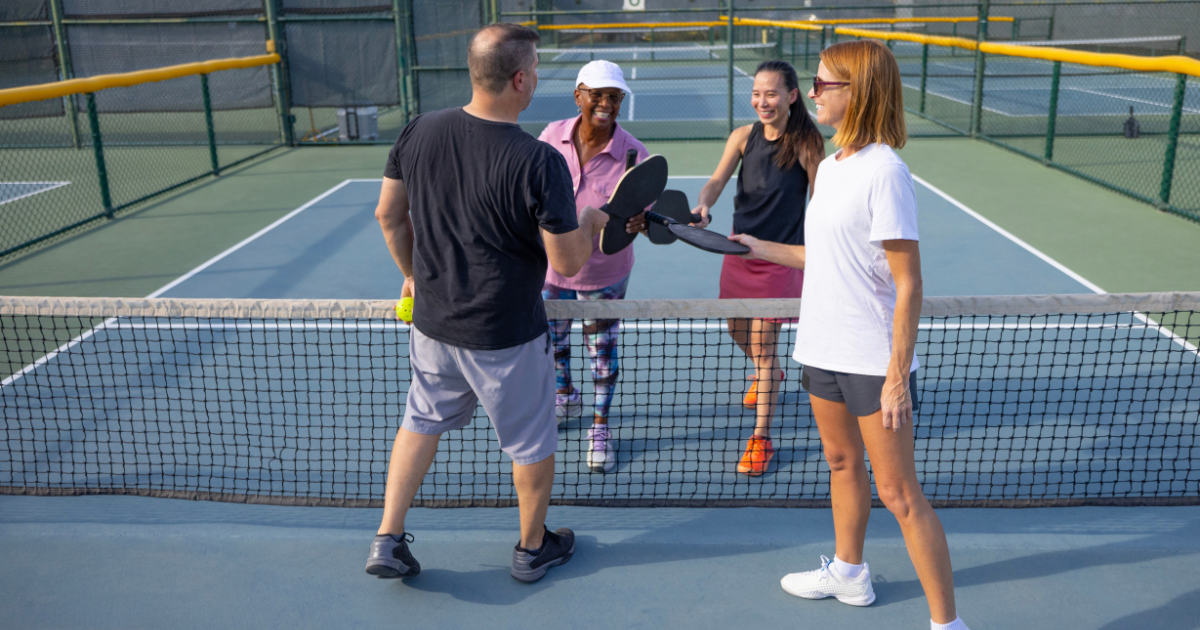Pickleball Rules Everyone Gets Wrong (and the Real Answers)
Pickleball is easy to pick up, but even experienced players get tripped up by the finer points of the rulebook. Whether it’s confusion about the “double bounce,” stepping into the kitchen, or whether a serve that clips the net still counts, misconceptions are everywhere. In fact, according to USA Pickleball, several of these rules rank among the most frequently misinterpreted by recreational players. So before your next game ends in a friendly argument or someone leaves in an Uber alone, here’s a definitive look at the pickleball rules everyone gets wrong—and the real answers you can trust.
1. The “Double-Bounce” Rule (Also Called the Two-Bounce Rule)
Common misconception:
“Once the ball bounces on the receiver’s side, the serving team can volley right away.”
The real rule:
According to USA Pickleball, “When the ball is served, the receiving team must let it bounce before returning, and then the serving team must let it bounce before returning it.”
In other words:
Serve → bounce on receiver’s side → return → bounce on server’s side → then volleys are allowed.
Why it matters:
The rule exists to prevent the serving team from rushing the net and dominating right after the serve. In casual games, many players step in early, but volleying before the second bounce is a fault.
Quick memory tip:
Bounce once on each side before volleys are legal.
2. The Kitchen (Non-Volley Zone) Confusion
Common misconception:
“You can’t ever step into the kitchen,” or “As long as I’m not touching the line, I can volley.”
The real rule:
The “kitchen” is officially called the non-volley zone (NVZ). Players may enter the NVZ at any time and hit a ball that has already bounced inside it. What they can’t do is volley (hit the ball out of the air) while standing in, or touching, the NVZ or its line.
The kitchen line counts as part of the NVZ. If your foot or paddle touches it during a volley, it’s a fault—even if your momentum carries you in afterward.
Why it matters:
Many players assume stepping into the kitchen is always off-limits—it’s not. You can hit groundstrokes from inside it. The restriction only applies to volleys. Likewise, touching the line counts as being “in” the kitchen.
Quick memory tip:
The kitchen is for bounce shots only. No volleying while in or touching it.
3. Serve Legality: The Underhand Debate
Common misconception:
“As long as my serve is underhand, I can toss and hit it any way I want,” or “If it hits the net and goes in, that’s a let.”
The real rule:
The server must strike the ball below the waist with an underhand motion (the paddle head below the wrist).
The serve must travel diagonally across the net into the opposite service court.
If the serve hits the net and lands in, it’s still live. USA Pickleball removed the “let serve” in 2021.
At least one foot must remain behind the baseline during the serve, and the server can’t step on or beyond the baseline until after contact.
Why it matters:
Many players still replay serves that hit the net, but that rule is outdated. Others serve too high or step forward too early. Both are faults.
Quick memory tip:
Serve low and clean: underhand, paddle below wrist level, foot behind baseline. Net serves that land in count.
4. Who Can Call What—and What Happens If They’re Wrong
Common misconception:
“If I see a foot fault, the point automatically ends,” or “If the wrong person serves, that’s a fault.”
The real rule:
Players may call NVZ or foot faults, but if there’s disagreement, the rally is replayed.
If a wrong player serves or receives, the rally stands, and positions are corrected for the next point.
Why it matters:
Pickleball is built on honesty and good sportsmanship. If you’re unsure, replay the point. Wrong server or receiver situations don’t automatically result in lost points under current USA Pickleball rules.
Quick memory tip:
Call it immediately. If there’s disagreement, replay the rally. Wrong server? Let the point stand and fix it for the next serve.
5. When the Serve Hits the Receiver’s Partner
Common misconception:
“If the serve hits the partner, it’s just a redo.”
The real rule:
If a served ball hits the receiver or their partner before it bounces, it’s a fault against the receiving team—point to the server. It doesn’t matter whether the partner is standing in or out of bounds.
Why it matters:
In doubles, partners often drift too close or turn away from serves. If the ball clips them before bouncing, the serving team automatically wins the point.
Quick memory tip:
If the serve hits you or your partner before bouncing, it’s your fault.
Why These Rules Cause So Much Confusion
Pickleball borrows ideas from tennis, ping-pong, and badminton—but its rules are unique. Players often carry assumptions from tennis, ping-pong, or badminton, and casual clubs may use ‘house rules.’ Plus, USA Pickleball updates its rulebook annually, so habits can lag behind the official rules.
Understanding the real rules doesn’t just help you win more—it makes games smoother, friendlier, and more fun.
The Takeaway
Let the ball bounce once on each side before volleys.
Don’t volley from the kitchen or while touching its line.
Serve underhand, below the waist, and diagonally—net serves that land in are good.
Disputes or wrong server situations? Replay or correct, don’t penalize.
If the serve hits the receiver’s partner before bouncing, it’s a point for the server.
Knowing the real rules gives you confidence and keeps games flowing without the awkward “Wait… what’s the rule again?” moments. Also, keeps the verbal court battles to a minimum.
Share this with your pickleball group and see who’s been playing by the book—and who’s been inventing their own version.



